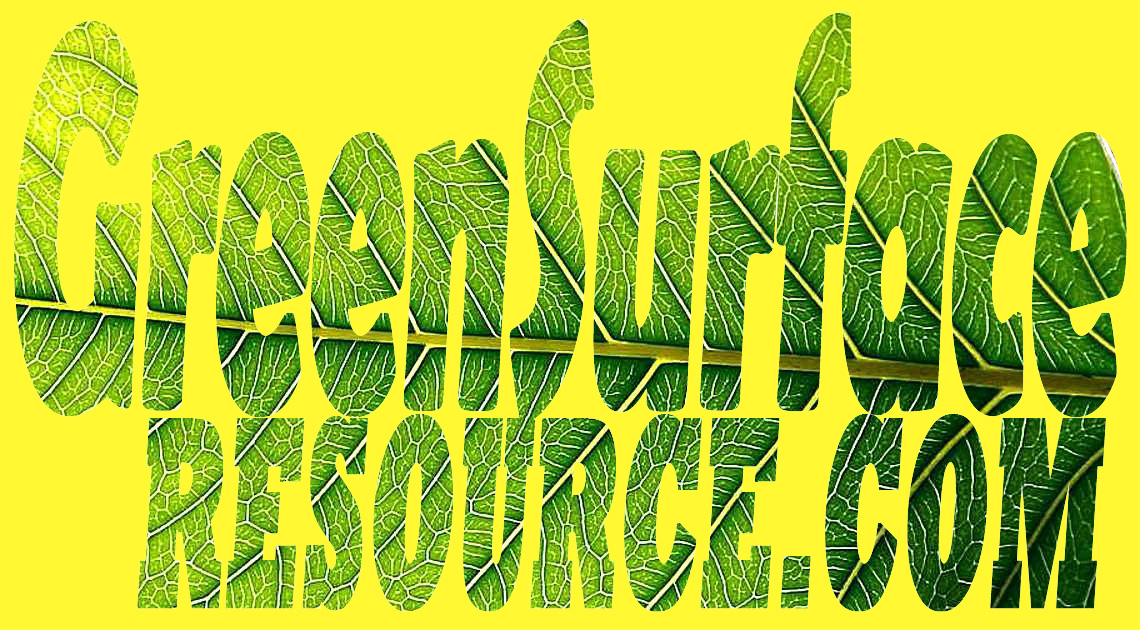Guest Editorial: The Sustainability Case for Sintered Stone

By Jessica McNaughton
Sintered Stone is the hottest new entrant to the surfacing market, with superior performance and durability – but does it have a sustainability story?
As a distributor of many building materials with sustainable characteristics, we often get asked, “’What is the perfect material?” We always explain that while there is no perfect material, there are many out there that offer environmentally savvy options. Some products are local, others are more durable and will likely not need to be replaced as often and others have recycled or reclaimed content.
Beyond these material characteristics, there are other things that need to be considered about materials, including manufacturing processes, fabrication processes and end of life uses.
But sometimes what is in the material is as important as what is not.
Sintered stone uses high heat to “sinter” minerals and nothing else. So unlike its highly commoditized-dirt-cheap-from-China predecessor, quartz, there are no binders or resins included, which means no petroleum based materials, which is a good thing.
Sintered stone also contains much less silica than quartz, which is better for the mining process, since there is no aggressive quartz mining to remove it from the earth and much less silica dust introduced in the fabrication process. Crystalline silica is very fine and can easily enter the lungs of workers and cause silicosis or other lung diseases if dust is not very carefully managed. OSHA recently revised its requirements in consideration of worker health and safety to account for the massive amounts of silica dust that enter their lungs due to the composition of granite and quartz.
While quartz and stone can be up to 90 percent silica, sintered stones are closer to 10 to 15 percent silica content, making them a healthier option with which to work.
The most advanced Sintered Stone, Lapitec, includes Bio-Care technology, which is titanium dioxide incorporated into the material, making it more hydrophilic, which allows it to be more easily cleaned. Bio-Care, coupled with the other desired properties that have caused the market to flock toward products like Lapitec provide durability, acid and alkali resistance, UV resistance, scratch and stain resistance, which results in an elite, modern surface.
One other environmental feature of sintered stone is its disposition at its end of life. Unlike resin-filled quartz, sintered stone’s 100% mineral composition allows for it to be disposed of as you would any other natural material. Quartz must be disposed of in a specific manner so it does not pollute natural resources with its petroleum-based resins.
Besides just performing better than quartz, there is a story about a better environmental impact for sintered stone as well. So, as you consider sustainable new materials, keep sintered stone on the list. It holds up better and longer and will not need to be replaced as often as stone or quartz, it uses no resins or binders and is a safer material for those working with it. Considering health is definitely a sustainable choice.
About the Author
Jessica McNaughton is the President of CaraGreen, a distributor of sustainable materials, and co-authored the book Understanding Green Building Materials. She has her Bachelor of Science in electrical engineering and her MBA from the Ivey Business School. She is also a LEED Accredited Professional (LEED AP).
Editor’s Note: The opinions expressed in guest editorials are those of the author’s and do not necessarily (although in some cases may) represent the views of the publisher, editor or owner of this website.





Dear Jessica, I was lucky to visit the Lapitec production line 2 years ago and it is indeed a great development. The sintering process being Lapitec, Dekton or Laminam uses a huge amount of heat to reach the desired sintering temperatures. It’s a good thing that these products contain less crystalline silica but it doesn’t change the working routine of fabricators. Dry cutting and grinding should be avoid at all times if there is a wet alternative.
The future will tell if there will be more than the current single production line from Breton in Italy. It’s a difficult production with low yields in output. Two or even 300 slabs a day will not make a big change to a huge stone market. Dekton may have 2 lines and made serious improvements to tackle stress problems.
I believe that the real future is in thinner slabs, maybe as thin as 3 mm Laminam. There is no future for 30 mm Laminam or Dekton in my opinion and even 20 mm will be a struggle.
If I look into my crystal ball than I see the ceramic industry who are dominating floor and wall cladding taking a share of the countertop market. They have the capacity, the resources and the logistics to penetrate quickly.
Dekton and Lapitec are looking in all directions with Dekton having competition of their own Silestone and Lapitec from all Breton quartz lines changing rapidly to Bio resin.
Kind regards,
Norman Saarloos
Care 4 Tops
Source: http://www.dekton.com/co-za/catalogs/safety.pdf
Stone is a finite resource. The bio resins are a great solution if they can perform. Lapitec and similar are great for outdoor kitchens etc. I think there is a place for all of these materials (geez people still use laminate and my parents haves TILE countertop!). I think sintered stone dramatically reduces silica (great for the new OSHA regulations here in the states) and I believe the workers need to be better protected. I’d love to hear about the bio resins you mention.
Jessica
Danke je wel.
The very informative article keep it up. Here is also a greate array of countertops.
granite countertops vs Quartz countertop